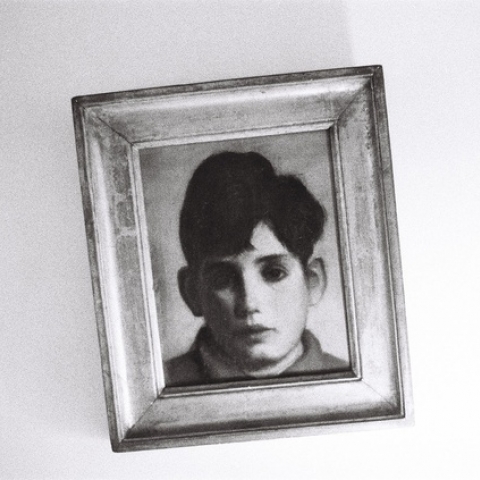In the late winter of 2015, I was invited by the MuCEM (Museum of European and Mediterranean Civilisations in Marseille) to join a five-week artist-in-residence program at the Camargo Foundation, in the small coastal town of Cassis near Marseille. At that time, I was going through a new phase in my life. My photographic work had reached an end of some sort of cycle, which is illustrated in my latest series Chott Maria. This series is an intimate work on memory and impression. I somehow felt free again so I accepted the invitation. Working in another territory seemed very interesting.
What struck me in this foreign space was the Cap Canaille, a massive rock overlooking the town. I found myself isolated and obsessed with this huge block of stone. I realized I was taking the same pictures of the headland almost every day. I was caught in a kind of loop, where I was endlessly photographing my isolation, my lonely wanderings in the city, and that famous rock.
From the multitude of pictures I shot, I intend to recreate this experience, this loop, in a filmstrip or a roman-photo that will in turn be published. I plan to transcribe my obsessions on the negatives, to alter them repeatedly by scribbling, scanning and re-scanning them. I also plan on working on the silver prints directly in a specialized laboratory where I would experiment with the chemistry in order to:
Test the limits of these pictorial memories,
Keep experimenting until exhaustion.
Scrape the flesh of photography,
Scrape it until there is nothing left.
Blend in acidic clouds,
Blend in blasts of wind.
Watch the marks of the mistral on the rock,
Watch them until they disappear.
About the artist

Photographer, videographer and Tunisian artist Fakhri El Ghezal was born in 1981 in Akouda, where he lives and works. EL Ghezal graduated in Fine Arts from the Higher Institute of Fine Arts of Tunis and in Art and Communication from the Institute of Fine Arts in Nabeul.
In his work, photography shapes the body of he who shapes it, in a perpetual resonance, incessantly moving back and forth between the memory of the flesh and that of the image. The images are also evanescent marks on the skin of photography. Faces and images, bodies and photographs. These are the two poles around which Fakhri's photographic work revolves obsessively. In a slow and long pickaxe movement that rises into the air and plunges into the earth, the same gestures, over the years, fertilize with wounds. Fertile patience then allows for the fruit to appear slowly, and to be harvested. Every time it is the same, and each time it is different. Coming yet going, faces yet images, bodies yet photographs, black yet white, political yet intimate, fiction yet documentary, the self yet the other.
His works have been presented at international exhibitions and festivals, such as the African Meetings of Photography in Bamako, the African Film Festival of Tarifa, Spain, the Beirut Art Center in Lebanon, at the CCCB in Barcelona, les Halles de Schaerbeek and KVS in Brussels, at the Abu Dhabi Art Fair, the New Museum in New York and at MuCEM in Marseille.
